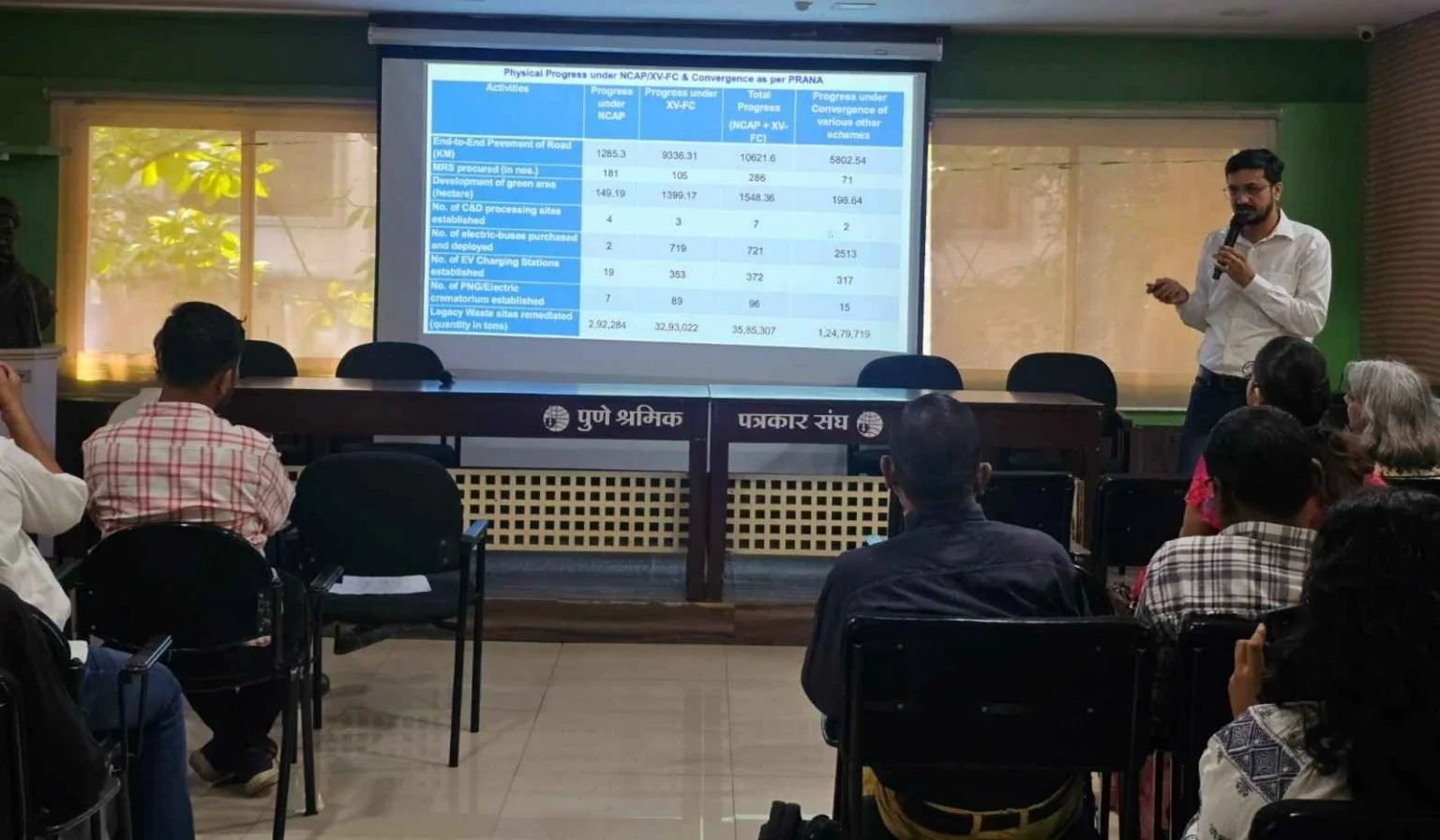Parisar Launches Pune Air Quality Data Dashboard to Strengthen Public Awareness and Data Access
As Pune heads into the winter months- a period when air quality in the city often dips due to increased pollution – Parisar has launched the Pune Air Quality Dashboard, a step aimed at making air quality information more accessible and actionable for all.
The interactive platform, which was launched on Thursday, brings together real-time data from multiple monitoring sources, including MPCB and IITM.
As a step towards strengthening public engagement and information access, Parisar launched the Air Quality Dashboard for Pune.
Shweta Vernekar, Parisar, said that accessibility to data is a crucial part of citizen engagement on any urban issue. Air quality is no different, and because of its slightly technical nature, it is moreover important to simplify it.
“Parisar’s Air Quality dashboard provides a common platform where monthly air quality data from different monitoring agencies- MPCB (three Continuous Ambient Air Quality Monitoring System monitors and two Manual Ambient Air Quality monitors) and IITM (ten Continuous Ambient Air Quality Monitoring System monitors) can be accessed. To maintain simplicity, the dashboard captures data on arguably the most hazardous pollutants in air – Particulate Matter (PM) – both PM 10 and PM 2.5 only,” she said.
Meanwhile, the dashboard also provides quick, intelligent analysis of data and trends over the years, crucial for advocacy and understanding of the issue. “It could be especially useful to researchers, students, activists and even journalists. For instance, the dashboard allows a viewer to see data across monitors, as well as individually, informing which monitors record the highest or lowest pollution in the city. The dashboard can also show within minutes the trend of winter months over two to three years, as per the availability of data,” informed Shweta.
The launch was part of a detailed discussion organised by Parisar in collaboration with the Pune Union of Working Journalists (PUWJ) and Asar Social Impact Advisors, focusing on the issue of air pollution and its health impacts. The session brought together experts, journalists, and civil society members to deepen understanding of the problem and the role of data in addressing it.
Dr. Ritu Parchure, Fellow, Prayas Health Group, spoke about the serious health impacts of air pollution, highlighting its links to respiratory illnesses, cardiovascular problems, and the disproportionate burden borne by vulnerable groups. “While looking at the AQI levels, we should be aware that health impacts begin as soon as the Satisfactory level is crossed and the AQI shows Moderate level, notwithstanding that it’s not reached the Poor, or Severe categories”, she cautioned.
Sunil Dahiya, Founder and Lead Analyst, Envirocatalysts, who gave a national perspective of the data trends said, “Our fight for clean air needs a new strategy with one clear goal: reducing the total emission load. We need a system where city, state, and central governments have segregated accountability. Without this, we misallocate resources and punish the very cities we are trying to help.”
Ranjit Gadgil, Program Director, Parisar, spoke of the importance of media workshops related to air quality. He said, “ The concept behind the workshop is to help journalists access, understand and interpret air quality data accurately and tell stories that connect numbers to people’s lives.The quality of media reports improves when reporters understand the science behind the data, improving public understanding of the issue, leading to better accountability.”
The discussion also focused on the importance of reporting on air quality in regional media, as well as the challenges faced by journalists in covering such issues.

